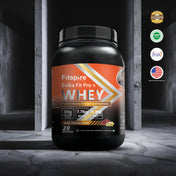Would you like to include more plant-based proteins in your diet?
Plant-based proteins are increasing due to the increasing popularity of veganism and vegetarianism and the growing emphasis on healthy, sustainable eating. However, dealing with this large number of plant-based protein sources may be scary.
In this blog, we will examine the leading plant-based protein sources and discuss ways of selecting the best for you as per your dietary requirements.
Protein in a Plant-Based Diet
Proteins are a vital macronutrient that is important for the development, repair and maintenance of our body cells and tissues. Vegans, on the other hand, require enough protein as most animal proteins have high nutrient bioavailability and incorporate all essential amino acids.
The key to obtaining a full amino acid profile as well as meeting your protein needs is using several plant-based proteins. Some of the best sources of plant-based protein include:
- Legumes (beans, lentils, peas)
- Nuts and seeds
- Whole grains (quinoa, brown rice, oats)
- Soy products (tofu, tempeh, edamame)
- Seitan (wheat-based meat alternative)
- Nutritional yeast
How to choose Plant-Based Protein Sources?
To make the most nutritious protein-based selections of plants, there are several factors to consider:
Protein Content: When we talk about plant-based foods, it’s important to know that they do not all have equal amounts of proteins. To identify the high protein foods in vegan diet, content per serving, compare the choice of different ones. For example, one cup of cooked lentils has approximately 18 grams of protein while a cup of spinach contains only about 5 grams.
Amino Acid Profile: Similarly as mentioned earlier, a variety of vegetable proteins need to be ingested to meet all essential amino acids. Some vegetable proteins such as soy and quinoa are known as “complete” because they have all the necessary amino acids but others are referred to as “incomplete,” like grains and legumes and must be combined for them to form a complete protein. Others, like grains and legumes, are "incomplete" and need to be combined to form a complete protein.
- Nutrient Density: Besides protein, several botanical products have an assortment of other vital vitamins, minerals and phytonutrients. Spot for food options with a high nutrient content such as green vegetables, nuts, sunflower seeds and whole grains.
- Digestibility: Some plant-based proteins can be digested more easily by the human body than others. Cooking methods used, processing and the presence of anti-nutrients like phytates and lectins may affect digestibility. Normally absorbed the best way is through minimal processing or use of whole foods.
- Allergies and Intolerances: Individuals with any food allergies or intolerances need to be aware of allergenic plant protein sources including soy, tree nuts or gluten (in its seitan form).
Top Plant-Based Protein Sources:
Now that you have an idea of what to search for, let’s examine some of the best plant-based protein options that you can incorporate in your diet.
- Legumes (beans, lentils, peas): Beans are nutrient-dense plants that comprise fibre and complex carbohydrates. They provide all the essential amino acids making them a great source of complete proteins. You can choose different types such as black beans, lentils, chickpeas and kidney beans.
- Nuts & Seeds: Almonds, walnuts, chia seeds and flax seeds are rich in protein, and healthy fats and contain various vitamins as well as minerals. Nuts and seeds serve as a practical snack on the go or they can be added to meals or snacks.
- Quinoa: This ancient grain is known as a complete protein because it contains all the necessary amino acids. It also has high amounts of fiber, minerals and antioxidants which make it a highly nutritious plant-based protein alternative.
- Tofu and Tempeh: Soy-based products such as tofu or tempeh are perfect examples of complete plant-based proteins. They can easily be cooked in many different ways hence they tend to be versatile additions to several recipes.
- Seitan: Seitan is a meat-like high-protein vegan foods substitute made from vital wheat gluten that can be used in several vegetarian or vegan recipes
- Nutritional Yeast: This deactivated yeast is a great source of complete protein, as well as B vitamins, including vitamin B12, which is often lacking in vegan and vegetarian diets.
Tips to add Plant-Based Proteins into Your Diet
Now that you know about some of the top plant-based protein sources, here are a few tips to help you incorporate them into your meals:
- Complement different types of proteins: Most plant-based proteins are not a completed amino acid, but one protein can compliment another. For instance, pair legumes or lentils with grains or quinoa.
- Use new recipes: as with anything, new recipes can get boring after a while. Discover lentil bolognese, tofu stir-fries, or nuts-based veggie burgers.
- Sprinkle protein sources: Nuts, seeds or yeast are all excellent sources of proteins. Sprinkle some into your salad, soup, or grain bowl.
- Prioritize Whole, Minimally Processed Options: Rather than overly processed meat substitutes or protein powders, choose whole, minimally processed plant-based sources of protein.
- Vary Your Protein Sources: When planning your weekly meals, make sure to switch up your protein sources so you’re getting all of the essential amino acids.
By including the factors mentioned and integrating a variegated group of plant-based protein sources, you may create a quality diet that is well-balanced, nutritious and thereby supportive of your overall health. Indeed, the point is to try different ones while keeping in mind what works efficiently for your own personal challenges and flavour choices.


